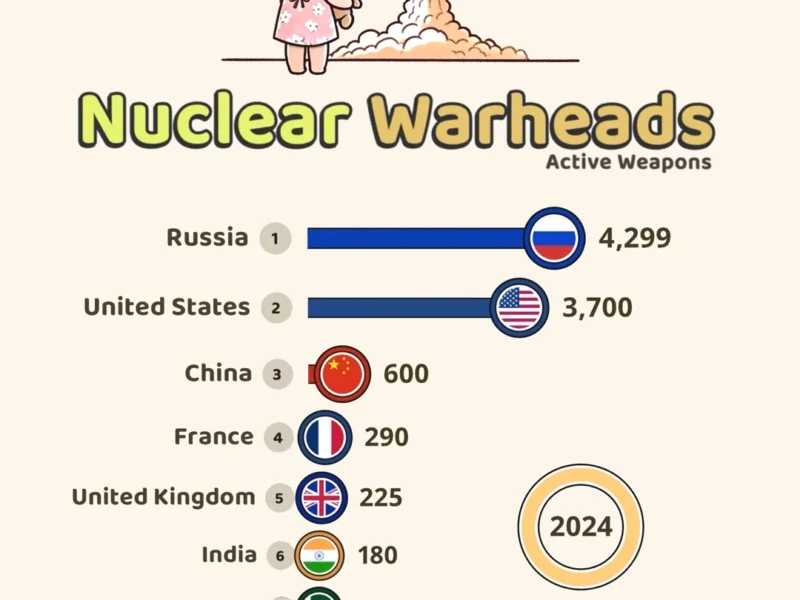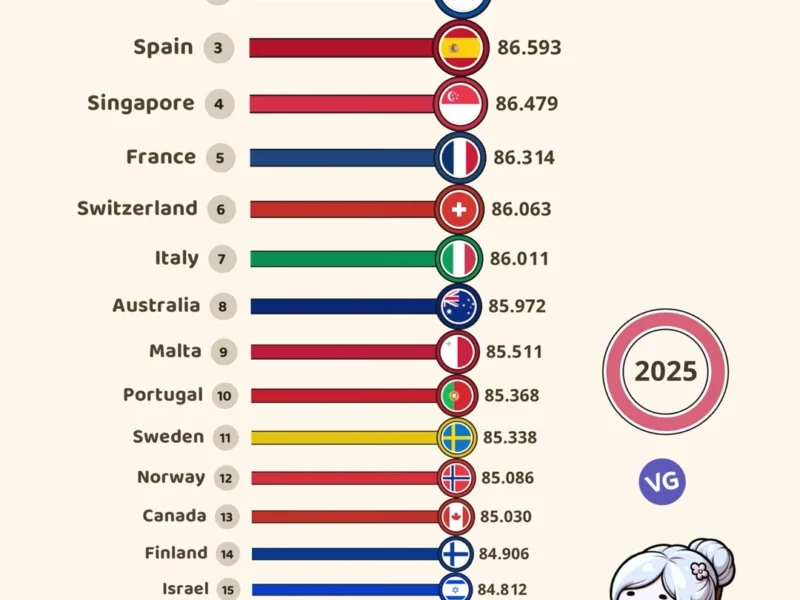The national flag of India is known as Tiraṅgā (or the tricolour). It has three horizontal bands. The colors are saffron, white, and green, with the navy blue Ashoka Chakra in the middle.1 It was chosen on July 22, 1947. This was just before India gained independence on August 15, 1947.21 The same flag is still in use today. In India, when people say “tricolour,” they mean the Indian flag.
Key Takeaways
- The Indian national flag, known as the Tiraṅgā, is a horizontal tricolor of saffron, white, and green with the Ashoka Chakra in the center.
- The flag was adopted in its current form on July 22, 1947, just a few days before India’s independence on August 15, 1947.
- The design of the flag includes a 24-spoke navy blue Ashoka Chakra in the center of the white band, with the top band being saffron and the bottom band green.
- The proportions of the Indian flag are 2:3, with the ratio of its width to length.
- The flag represents the unity, diversity, and aspirations of the Indian nation.
History of the Indian National Flag
The Indian national flag’s history is rich and diverse. Before independence, India used several flags. These flags had different designs and were used by various princely states.
The idea of a single flag for India began after the 1857 rebellion. This event led to direct rule by the British. The British introduced the notion of a common flag for India at that time.1
Pre-independence Movement
In the early 1900s, many in India wanted a single identity. They sought unity through familiar symbols like Ganesha, Kali, and the cow. Various designs were created to represent the will for freedom.1
Early Tricolour Development
Early tricolor flags were designed using saffron, white, and green. These colors reflected India’s diverse culture and religions. Such flags were key in uniting people for the fight against British rule.1
Gandhi’s Activism
Mahatma Gandhi was a key proponent for a national flag. He, along with other leaders, pushed for a unique flag. Their efforts came to fruition on July 22, 1947. This is when the Constituent Assembly officially adopted the current Indian national flag.1
Symbolism of the indian flag
The Tiranga, the Indian national flag, shows the country’s heritage and unity. It has three colors: deep saffron, white, and dark green.1 Saffron stands for the nation’s courage,1 white for peace, and green for growth.
Each color brings a special meaning to the flag. Saffron represents the country’s bravery. White means peace and truth. Green symbolizes the land’s fertility and luck.1
The Dharma Chakra
In the middle of the white band is a navy blue Dharma Chakra. This wheel has 24 spokes and is known as the Ashoka Chakra.3 It signifies righteousness and the cycle of change.1 The Dharma Chakra shows the path of harmony and growth for the nation.
The Indian flag’s tricolor is made of saffron, white, and India green. It shows the same proportions of each color.3 There’s an Ashoka Chakra in navy blue at its center.2 The flag’s width is two-thirds of its length.1 This design reflects the country’s values and beliefs.
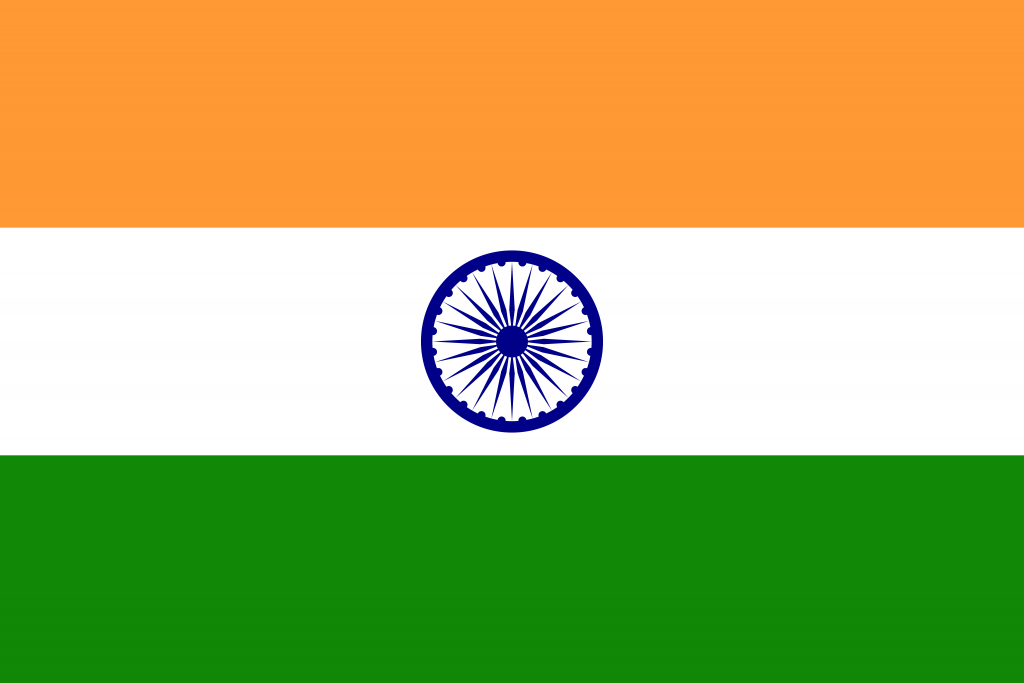
Flag Design and Proportions
The indian flag design shows a tricolor design. It has deep saffron at the top, white in the middle, and dark green at the bottom. Each color takes up the same amount of space.1
The indian flag proportions are set at two to three, meaning the flag’s width should be half its length.1 In the middle white band sits a navy blue wheel. It has 24 spokes equally placed. This is the Ashoka Chakra symbol.2 The flag we see today was chosen on 22 July 1947 by the Constituent Assembly of India.1
| Flag Specification | Value |
|---|---|
| Proportion (Width:Length) | 2:3214 |
| Number of Spokes in Ashoka Chakra | 2421 |
| Date of Adoption | 22 July 194714 |
Until 2021, the Flag Code stated the Indian national flag must be made from khadi. Khadi is a handwoven cloth or silk.2 Since 2023, there are 4 units in India that are allowed to make the national flag.2
Flag Code of India
The5 Flag Code of India, 2002, has three parts.5 Part I explains the National Flag.5 Part II guides the public, organizations, and schools on the flag’s display.5 Part III tells how Central and State governments use the flag.
Part I: General Description
The6 Flag Code of India says the National Flag’s length to height ratio should be 3:2.6 It can be made of hand-spun, hand-woven or machine-made fabrics like cotton or silk.6 The Code was recently changed to allow the use of polyester or other machine-made materials.
Part II: Display by Public and Private Organizations
6 The Flag Code sets rules for how the National Flag is displayed by individuals, NGOs, and schools. It should reflect the flag’s dignity.6 It says the flag can’t be raised with any other flag, unless special permission is granted.
Part III: Display by Government Agencies
6 The Code mandates that only certain high-ranking officials’ vehicles carry the National Flag.6 Also, wherever it’s displayed, the flag must always be the most visible and in a special place.
Hoisting and Display Rules
Dos
The National Flag may be hoisted in many places to show respect. This includes schools, colleges, sports and scout camps.7
Anyone from the public can also do this in a right way. They can do it on any day that is important.8
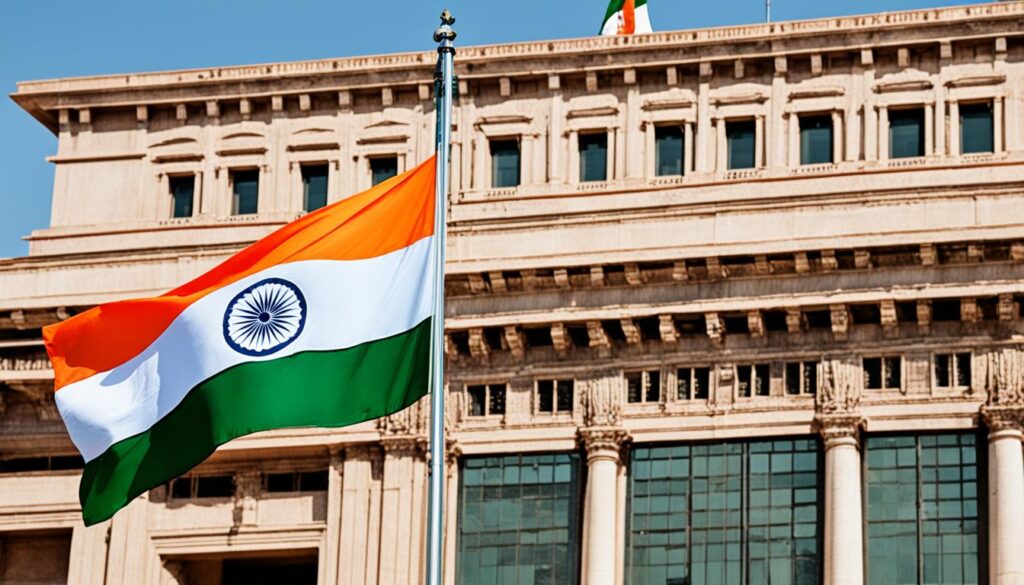
Don’ts
It is wrong to show a damaged National Flag. Or to place something above it.9
The Flag should not be used for fun or fashion. Nor worn under the waist as part of clothes.9 Only top leaders can have it on their cars.9
The National Flag must be stored and taken care of well. If it can’t be used anymore, burn it.9 Breaking these rules in public can lead to jail or a fine.9
Historical Significance
The [historical significance of the Indian flag] goes back to India’s past and its fight for freedom. It stands for the dreams and hopes of the country, a sign of Indian pride.2 For over 50 years, many brave people, even from the military, sacrificed their lives to keep the flag high.2
The current flag was designed by Mahatma Gandhi and Jawaharlal Nehru in 1947, inspired by the Swaraj flag.2 It has the colors saffron, white, and green, and the navy blue Ashoka Chakra. The flag’s proportion is 2:3, chosen on 22 July 1947.2
Until 2021, the flag had to be made from khadi, a special hand-spun cloth.2 Since 2023, only 4 places in India can legally make the flag.2 In 2002, the Supreme Court changed the rules, allowing everyone to use the flag, not just on special days.2
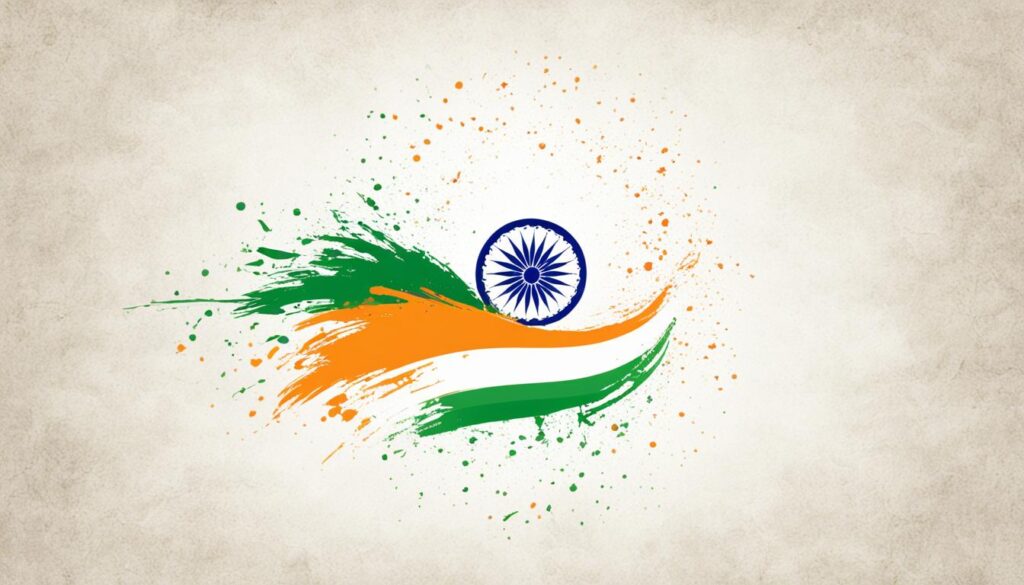
Respect and Honour for the Tricolour
The Indian National Flag is a poignant symbol of freedom. It stands for our pride as a nation1. This flag was chosen by the Constituent Assembly on July 22, 1947. That was just a few days ahead of our freedom from British rule on August 15, 19472. It has three stripes horizontally, in saffron, white, and green. These represent courage and sacrifice and symbolize peace and faith. August 15, 1947, marks its official use2.
The flag has specific colors. The top stripe is saffron, standing for sacrifice. The middle is white, representing truth. The bottom is green, a symbol of faith. At the center is the Ashoka Chakra in navy blue. This circle isn’t just a design. It’s a reminder that life is all about dharma, or duty2.
Before 2021, the flag had to be made of khadi, a special material. But from 2023, four places in India are allowed to make it. Since January 26, 2002, anyone in India can fly the flag any time in their homes or offices. This right is a mark of unity and pride for all Indians1.
indian flag Images and Wallpapers
The National Flag of India is called the Tricolor or Tiranga. It’s a stunning symbol of unity, diversity, and a rich history. With vibrant colors and the Ashoka Chakra at its core, numerous Indian flag images and Indian flag wallpapers bring out India’s true spirit.10
The Indian flag shows a trio of deep saffron, purity of white, and the growth in green. At its center, the Ashoka Chakra in navy blue stands for justice, peace, and progress. It also symbolizes the eternal wheel of law.10
There’s a wide array of Indian flag images and Indian flag wallpapers to choose from. You’ll see the flag in different sceneries, from grand mountains to lively cities. It represents India’s varied cultures and landscapes.11
These Indian flag images and Indian flag wallpapers offer something for everyone. You might find a bold abstract design, a calm nature scene, or something patriotic. They’re perfect for mobile devices, letting everyone show their love for India.11
In places like Punjab, Chennai, and Kolkata, the Tricolor is always seen. It prominently flies on Republic Day and Independence Day. The Indian flag images and Indian flag wallpapers capture these special times, stirring up national pride and unity.10
| Dimension Range | Keywords | Variations | Optimizations |
|---|---|---|---|
| 720x1280px to 4399x8819px11 | “Indian National Flag,” “Indian Army,” “tricolor,” “tiranga,” “independence day,” “republic day,” “Bhagat Singh”11 | Abstract designs, nature backgrounds, art, flags on maps, patriotic symbols11 | Catered to mobile phone resolutions, optimized for HD viewing11 |
These Indian flag images and Indian flag wallpapers celebrate the deep culture and history of India. They spotlight the national flag’s beauty and the Ashoka Chakra’s significance. Together, they remind us of India’s remarkable past and the unity of its people.1011
Interesting Facts About the Indian Flag
The12 Indian National Flag was first used on August 15, 1947. It was used until January 26, 1950. Then, it became the flag of the Republic of India.13 In 2002, the flag code changed. Now, Indians can fly the flag everyday, not just on special occasions.14
| Interesting Fact | Reference |
|---|---|
| People celebrate National Flag Day in India on July 22. They do this in honor of the day the tricolor flag was chosen. Pingali Venkayya designed it. | 12 |
| On August 7, 1906, the first Indian flag flew in Calcutta. It had green, yellow, and red stripes. | 12 |
| The Indian National Flag’s three colors have important meanings. Saffron means courage. White stands for peace and truth. Green means fertility. | 12 |
| The middle of the flag shows a navy blue chakra on the white stripe. It has 24 spokes. This wheel means the Dharma Wheel. | 12 |
| Pingali Venkayya made the Indian flag in 1921. This was during the fight for liberty against the British. | 12 |
| The Flag Code of India tells how to correctly use the flag. | 12 |
| Khadi, a special cloth, is used to make the Indian flag. It’s hand-spun and hand-woven. | 12 |
| A huge Indian flag flies at the Attari-Wagah border. It’s 110 by 24 meters big. | 12 |
| On August 16, 1947, the Indian flag first waved in New Delhi. This was after India won freedom from British rule. | 12 |
| When India mourns, the flag flies halfway. This is to show respect. | 12 |
| The Lion Capital of Ashoka’s pillar is on the national seal. It was inspired by the flag’s Dharma Chakra. | 12 |
| On May 29, 1953, India’s flag was on top of Mount Everest. It was with the flags of Britain and Nepal. | 12 |
| National Flag Day in India is a special day. It honors the flag’s role in India’s independence and unity. | 12 |
| The Indian National Flag was launched on July 22, 1947. This was just before India’s independence day on August 15. | 13 |
| India’s flag has three equal stripes. They are saffron, white, and green. In the center is a navy blue Dharma Chakra. | 13 |
| The flag’s width to length ratio is 2 to 3. This is set by the Flag Code of India. | 13 |
| Khaḍi, originally from a village in Karnataka, is used to make the flag. This village is Garag in the Dharwad district. | 13 |
| India has the largest khadi flag, unveiled on January 15, 2022. It was in Jaisalmer and measured 33,750 sq. ft. | 13 |
| The Flag Code of India started on January 26, 2002. | 14 |
| The Indian National Flag has three colors. Saffron for courage and sacrifice. White for truth, peace, and purity. Green for prosperity. | 14 |
| The Ashoka Chakra in the middle of the flag must have 24 spokes and be blue. | 14 |
| The width to length ratio of the Indian flag is 2:3. | 14 |
| The Indo-Pak border at Attari has a large Indian flag. It’s 110 by 24 meters and weighs 55 tons. | 14 |
| On May 29, 1953, the Indian flag was raised on Mount Everest by Edmund Hillary and Sherpa Tenzing Norgay. | 14 |
| In April 1984, the Indian flag went into space. Cosmonaut Rakesh Sharma wore it during the space trip with the Soviet Union. | 14 |
Celebrations and National Days
The Indian National Flagflag celebrations> is hoisted with pride on India’s national holidays. These include Independence Day on August 15th and Republic Day on January 26th15. Citizens can hoist the flag following the Flag Code to show respect to the tricolour.
Not just on these two occasions, but also on other important national daysnational days> like Army Day on January 15th16 and World Health Day on April 7th16. Teacher’s Day, on September 5th, and Mahatma Gandhi’s Birthday on October 2nd16 are also observed. Moreover, events mark the Indira Gandhi’s Death Anniversary on October 31st as Anti-Terrorism Day16. Legal Services Day on November 9th, Children’s Day on November 14th, and World AIDS Day on December 1st are also celebrated.
The celebrations on these national daysflag celebrations>include ceremonies, parades, and cultural events. They highlight India’s rich heritage and diversity15. Government officials, armed forces, students, and the general public join these events, showing their admiration for the national flag.
The adoption of the Indian national flag is remembered on July 22nd every year17. Known as Indian National Flag Adoption Daynational days>. On this day in 1947, the Constituent Assembly chose the flag’s design. The celebration includes cultural shows and musical performances that honor the flag as a national symbol.
| National Day | Date |
|---|---|
| Army Day | 15th January |
| Republic Day | 26th January |
| World Health Day | 7th April |
| Independence Day | 15th August |
| Teacher’s Day | 5th September |
| Mahatma Gandhi’s Birthday | 2nd October |
| Indira Gandhi’s Death Anniversary (Anti-Terrorism Day) | 31st October |
| Legal Services Day | 9th November |
| Children’s Day | 14th November |
| World AIDS Day | 1st December |
Conclusion
The Indian National Flag stands for unity, diversity, and the country’s dreams.18 It features a tricolour with the Ashoka Chakra at its heart. This design symbolizes India’s great history, diverse culture, and promising tomorrow.19 Laws like the Flag Code of India make sure the flag is always honored and handled with care.18,20
In summary, the Indian tricolour is not just fabric. It signifies India’s strong will and the principles that bring its people closer.18,19,20
FAQ
What is the Indian national flag?
The Indian national flag is known as Tiraṅgā, which means the tricolour. It has three colors: India saffron, white, and India green. There is a navy blue Ashoka Chakra in the middle. This is a 24-spoke wheel.
When was the Indian national flag adopted?
India adopted its national flag on 22 July 1947. This was during a Constituent Assembly meeting. It officially became the flag of the Union of India on 15 August 1947.
What do the colours of the Indian flag represent?
Each color of the Indian flag has a special meaning. The top saffron band stands for strength and courage. The white band in the middle signifies peace and the Dharma Chakra. Lastly, the green at the bottom shows growth and the land’s fertility.
What is the design and proportions of the Indian national flag?
The Indian flag is a horizontal tricolor. Saffron is at the top, white in the middle, and green at the bottom. These are in equal parts. The flag’s width is half of its length. In the middle white band, there’s a navy blue Ashoka Chakra with 24 spokes.
What are the key parts of the Flag Code of India?
The Flag Code of India, 2002, is separated into three parts. The first part describes the National Flag. The second part tells how it should be displayed by the public, organizations, and schools. The last part is about how governments and their bodies should display the flag.
What are the do’s for displaying the Indian national flag?
The National Flag can be raised in schools, colleges, and similar places. It should happen to show respect for the flag. Properly, anyone or any group can show the flag on any occasion. It just has to reflect the flag’s dignity and honor.
How is the Indian national flag significant historically?
Between 1947 and 1950, the Indian National Flag was of the Dominion of India. Since 1950, it has represented the Republic of India. In 2002, the flag code was changed. This allowed people to fly the flag any day, without just being on national holidays.
Why is the Indian national flag a source of pride and honour?
For all Indians, the national flag brings deep pride. It shows India’s unity, its varied culture, and its dreams. The flag’s tricolour and the Ashoka Chakra at its heart symbolize India’s bright history and promising future.
Source Links
- https://knowindia.india.gov.in/my-india-my-pride/indian-tricolor.php
- https://en.wikipedia.org/wiki/Flag_of_India
- https://www.india.gov.in/india-glance/national-symbols
- https://www.britannica.com/topic/flag-of-India
- https://en.wikipedia.org/wiki/Flag_Code_of_India
- http://www.nsiindia.gov.in/writereaddata/FileUploads/harghartiranga.pdf
- https://www.mha.gov.in/sites/default/files/FAQ_18072023.pdf
- https://unacademy.com/content/bank-exam/study-material/general-awareness/indian-flag-rules-and-regulations/
- https://m.economictimes.com/news/new-updates/rules-for-displaying-the-national-flag-explained-as-nation-takes-part-in-har-ghar-tiranga-campaign/articleshow/93536497.cms
- https://unsplash.com/s/photos/indian-flag
- https://www.peakpx.com/en/search?q=indian flag
- https://www.jagranjosh.com/general-knowledge/interesting-facts-about-flag-day-of-india-1690005097-1
- https://vikaspedia.in/education/childrens-corner/interesting-facts-on-indian-flag
- https://byjus.com/free-ias-prep/10-interesting-facts-about-indian-national-flag-for-upsc-ias-exam/
- https://en.wikipedia.org/wiki/Independence_Day_(India)
- https://davp.nic.in/cal_of_events.htm
- https://modeindia.co.in/special_days/indian-national-flag-adoption-day/
- https://infinitylearn.com/surge/english/essay/indian-flag/
- https://www.toppr.com/guides/essays/essay-on-national-flag-of-india/
- https://byjus.com/kids-learning/essay-on-indian-flag/

